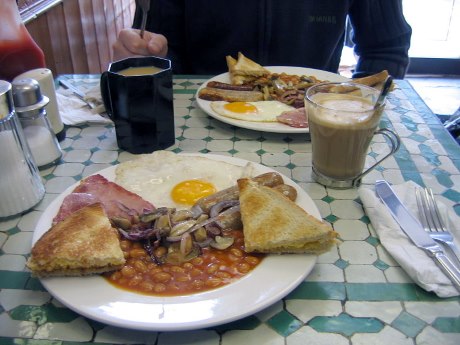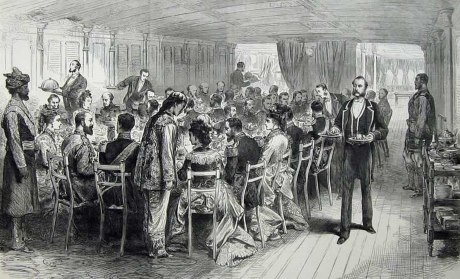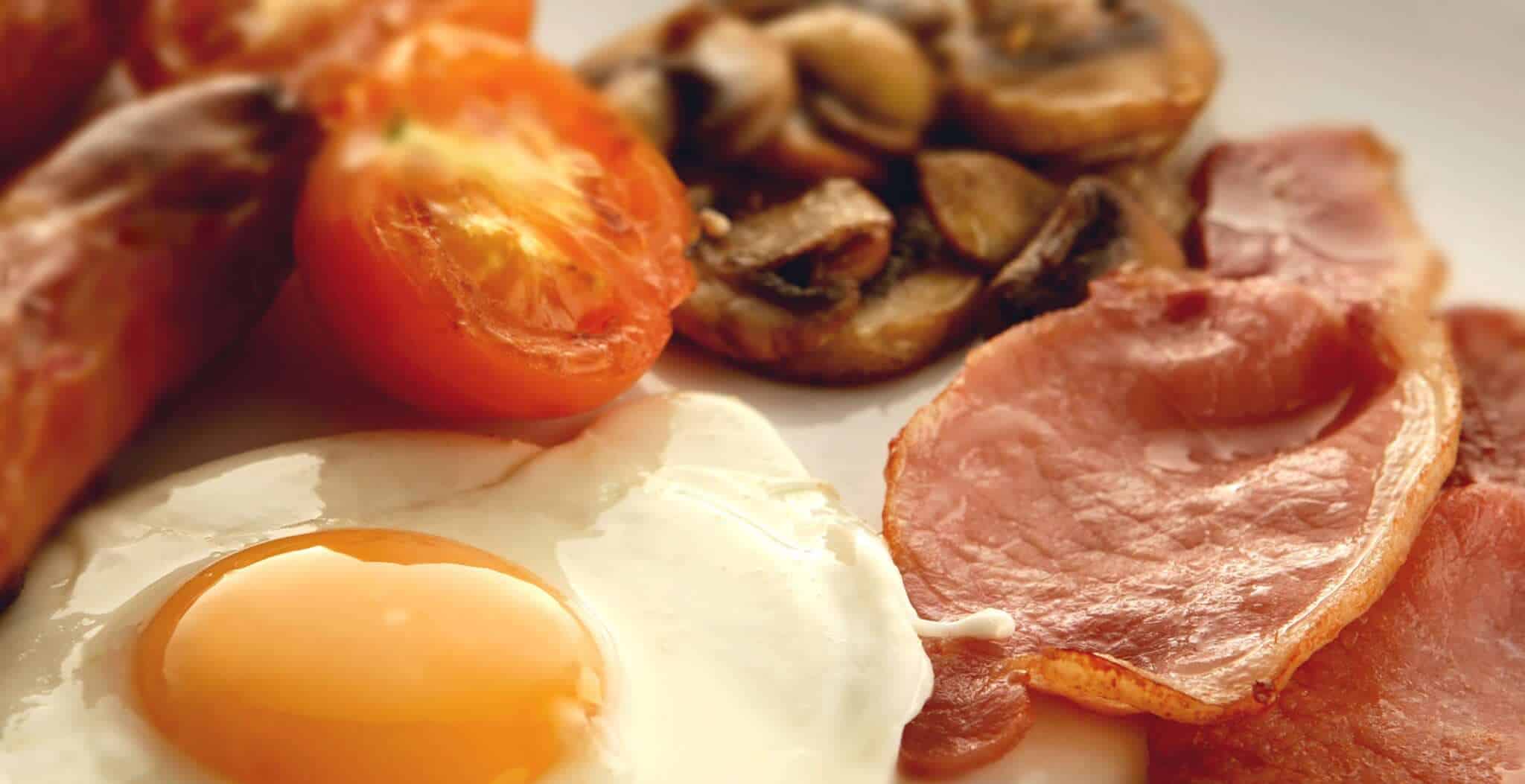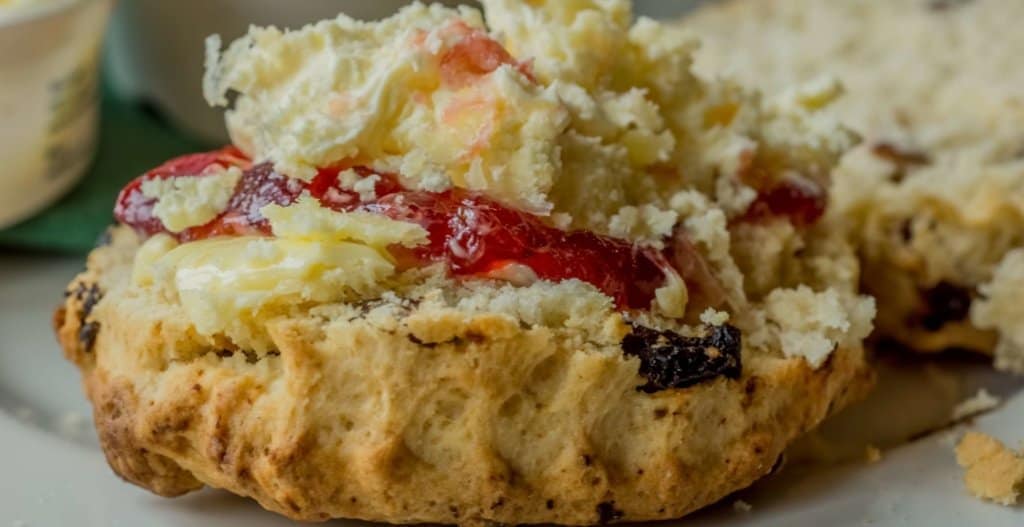“When you wake up in the morning, Pooh,” said Piglet at last, “what’s the first thing you say to yourself?”
“What’s for breakfast?” said Pooh.
‘Winnie the Pooh’, by A.A. Milne
The traditional English breakfast is a national institution. Most of us love a full English breakfast; you can even travel abroad, to the Mediterranean resorts in Spain for example, and find this quintessentially British dish on sale in cafes and restaurants.
Sometimes also called a ‘fry-up’, the full English breakfast consists of fried eggs, sausages, back bacon, tomatoes, mushrooms, fried bread and often a slice of white or black pudding (similar to bloodwurst). It is accompanied by tea or coffee and hot, buttered toast. These days, breakfast may also include other items such as baked beans and hash browns.

There are many regional versions of this staple. For example, the Ulster Fry includes Irish soda bread; the Scottish breakfast boasts a tattie scone (potato scone) and even maybe a slice of haggis; the Welsh breakfast features laverbread (barra lawr, made from seaweed); and the Cornish breakfast often comes with Cornish hogs pudding (a kind of sausage).
The tradition of breakfast dates back to the Middle Ages. At this time, there were usually only two meals a day; breakfast and dinner. Breakfast was served mid or late morning, and usually consisted of just ale and bread, with perhaps some cheese, cold meat or dripping.
A lavish breakfast was often served by the nobility or gentry at social or ceremonial occasions such as weddings. A wedding mass had to take place before noon, so all weddings took place in the mornings. The first meal the new bride and groom ate together would therefore be breakfast and became known as the ‘wedding breakfast’.
By Georgian and Victorian times, breakfast had become an important part of a shooting party, weekend house party or hunt and was served a little earlier. The gentry loved to entertain lavishly and that included breakfast.
Breakfasts were unhurried, leisurely affairs with plenty of silver and glassware on show to impress the host’s guests. The breakfast table would groan under the weight of the produce from the host’s estate. Newspapers were available for the family and guests to catch up on the day’s news. Indeed, it is still socially acceptable today to read newspapers at the breakfast table (a definite ‘no-no’ at any other meal).
As well as eggs and bacon, which was first cured in the early 18th century, the breakfast feast might also include offal such as kidneys, cold meats such as tongue and fish dishes such as kippers and kedgeree, a lightly spiced dish from colonial India of rice, smoked fish and boiled eggs.

State Breakfast given by Edward, Prince of Wales (later King Edward VII) on board HMS Serapis for the King and Queen of Greece, 1875
The Victorian era saw a wealthy middle class begin to emerge in British society who wished to copy the customs of the gentry, including the tradition of the full English breakfast. As the middle classes went out to work, breakfast began to be served earlier, typically before 9am.
Surprisingly, the full English breakfast was also enjoyed by many of the working classes. The punishing physical labour and long hours of work in the factories of the Industrial Revolution meant a hearty meal first thing in the morning was necessary. Even as late as the 1950s, almost half the adult population began their day with a good old English fry-up.
In today’s health conscious world, you may have thought that a full English breakfast was not the healthiest way to start the day, but some experts maintain that such a meal in the morning boosts the metabolism and needn’t be unhealthy, especially if the food is grilled rather than fried.
Perhaps the full English breakfast remains so popular, not just because it tastes so good but simply because it has been enjoyed for centuries by people from all walks of life. It is served everywhere in Britain: in luxury hotels, country inns, guest houses, B&Bs, cafes and restaurants. Sometimes you will also find an ‘all day breakfast’ on the menu, as this is indeed a meal that can be enjoyed at any time of the day.
For many working people, breakfast midweek, if eaten at all, often consists of just a piece of toast and a cup of instant coffee taken on the move. But at weekends, what could be better than a leisurely full English with the morning papers?
Published: May 4, 2015.



